What to do in February
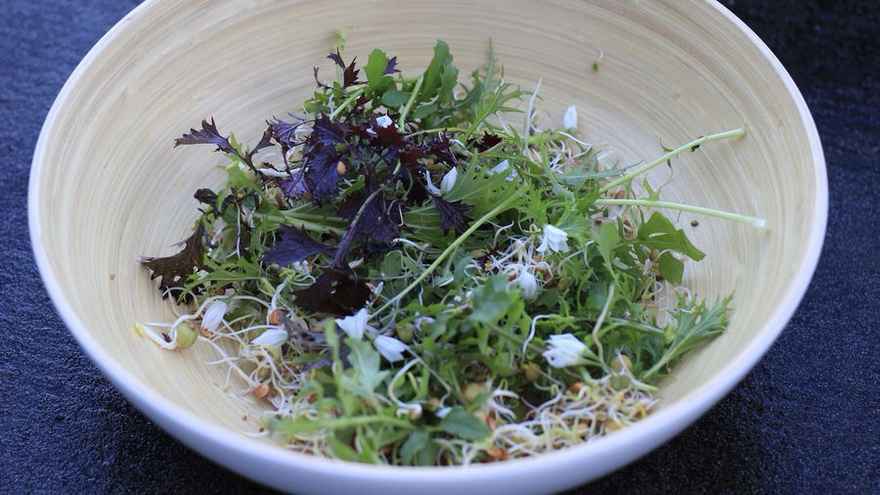
Each month I share seasonal tips on growing veg, salads, herbs and fruit in containers on your balcony, yard or patio: what to sow, grow and do. My advice assumes you don’t have a garden -a potting shed, a greenhouse or a compost heap! The idea is that these will help you navigate the season and serve as a gentle reminder of what you might want to sow and grow in your container Garden each month
As spring approaches, our thoughts turn to the new growing season - but we need to remember that February is still winter! Most plants do not want to grow much in these cold, dark, short days.
For the keen gardener (and particularly if you love chillies or want to establish fruit bushes or trees) there are things you can plant and sow this month - suggestions, below.
But, for the rest of us, we can happily ignore the seed sowing frenzy on social media for a few weeks yet.
Jobs for this month
-
Plan what to grow and check seed pack dates
-
What you can sow inside: including chillies & peppers, aubergines / eggplants
-
What you can sow / plant outside: including fruit trees, garlic, broad / fava beans, Jerusalem artichokes, pea shoots.
-
What to harvest
-
What you DON'T need to do this month
A salad picked from my containers in February: spring onions,/ scallions, viola flowers, three cornered leek, chard, rocket / arugula, and mustard
1. Plan what to grow and check how old your seeds are
The long, dark evenings of February are a good time to plan what to grow this year, to check your seed supplies, and to order any extra you need before the spring rush.
A common frustration and disappointment in gardening is when seeds you sow don’t come up. There are several possible reasons for this, but a common one is that the seeds are too old. The seeds of different vegetables last (or remain ‘viable’) for different lengths of time - some for just a year or two, others for many years if they are stored well. Seeds need cool, dry and dark conditions to last well.
For example, spring onions / scallions - a great choice for container gardening! - grow best from seed that is not more than one or two years old. To give the best chance of growing healthy spring onions I now buy fresh seeds every year, using the full packet over the year. A common reason why people have problems growing spring onions is simply that the seeds are past their best.
Other seeds with a lifespan of just one or two years include spinach, parsley, coriander / cilantro, basil, dill and sometimes lettuce and peas (although these last two are more variable). If growing any of these from seed, check the dates carefully and, if unsure, sow a few in a seed tray early in the season to see how they come up. Or, as Sally Morgan describes in her excellent Substack here, test their germination in paper first. I would do this myself but I’m usually too disorganised!
Seeds that last longer, for three or four years or more if stored in a dry, cool, dark place, include tomatoes, peppers, chillies, cucumbers, kale and rocket / arugula, and squash. I've successfully grown tomato seeds well over eight years old.
Once you know that seed viability is an issue, you’re better equipped to spot it when it happens.
The job for this month is to go through your old seeds and check the packing dates to see how old they are1- and to identify any past their best. To find out how long different vegetable seeds remain viable search online for ‘seed viability charts’ - like this handy downloadable PDF from Joe Gardner (thank you Joe!).
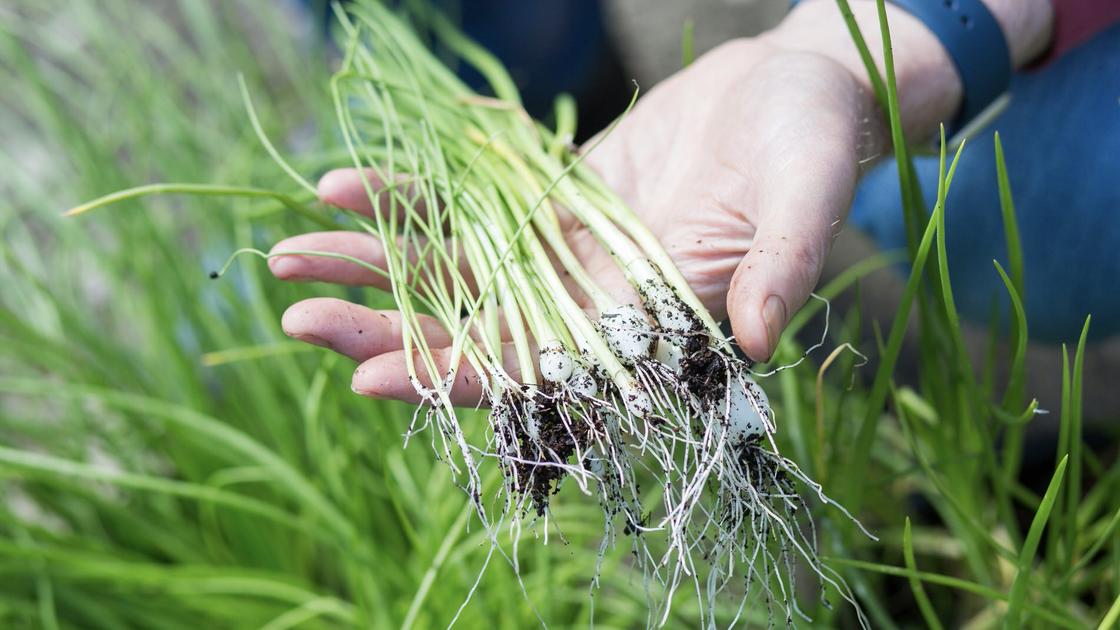 Spring onions / scallions grow best from fresh seed.
Spring onions / scallions grow best from fresh seed.
2. What to sow inside
Light levels are low outside in February due to a combination of short days and a low sun - and they are even lower inside. When growing inside at this time of year, it’s easy end up with weak, spindly seedlings. Seedlings need LOTS of light to grow well.
It’s generally much easier to grow strong, healthy seedlings inside at this time of year with an LED grow light. If you're keen to grow chillies and aubergines - both of which can be sown this month - getting a growlight will certainly make it easier.
Before sowing chillies or aubergines / eggplants for the first time, be sure you have a sunny (at least six hours of sun a day) and sheltered space outside to move them into later in the year. However, in cooler areas, like here in the North of England, chillies and aubergines rarely fruit well outside - they really need a green house or sunny and very light place inside. However, in warmer parts of the UK (like London) and Europe and the USA many varieties will grow fine outside. USDA Zones 8 to 11 are ideal, and Zones 6 to 7 should be OK, too.
'Ring of Fire' chillies growing well on a south facing ladder outside my old flat in London. Here in Newcastle it’s hard to grow chillies productively outside.
Chillies
Different chilli varieties take different lengths of times to mature and fruit. The slower growers need to be sown early in the year, ideally this month, to give them enough time to grow and fruit before autumn. The slow ones include most of the hotter chillies, including Scotch Bonnet, the ‘habanero’ type chillies and also my favourite chilli, Alberto’s locoto. These all take 20 weeks or more from sowing to fruiting. By sowing them this month you have a good chance they will be fruiting by July or August.
The quicker growing varieties can be sown now or later in the year. Good faster growing varieties for containers include Hungarian Hot Wax, Jalapeño Early, and Apache, which need 12 - 16 weeks from sowing to fruiting. These varieties can be started as late as early April, when it is much easier to raise healthy seeds, even on a windowsill inside - and a growlight becomes less necessary.
Aubergines / Eggplants
Most varieties of aubergines / eggplant also need 20 - 24 weeks before they fruit. They are best sown this month, too. Alternatively, you can save yourself a fair amount of work by buying an aubergine plant or two later in May or June! The grafted varieties are supposed to yield well in containers and I hope to try these this year.
Although we eat a fair few aubergines, I haven’t found them easy to grow productively in containers here in the north of England. I will keep trying! If you live in a warmer area, you might have more success.
Tomatoes
Tomatoes are much faster growers than chillies, and most varieties start fruiting about 12 weeks after sowing - if conditions are warm and sunny enough. There is absolutely no need to sow any tomatoes this month - but if you fancy a few early pickings, it can be fun to sneak in a couple of seeds. Just be aware: they grow fast and big - and will quickly take over your kitchen or flat if you sow too many (a common bone of contention for those who share a home with non-gardeners!). I delay nearly all my tomato sowing until late March or early April.
Chillies and aubergines germinate best in the warmth
Chilli, aubergine/ eggplant and tomato all hail from the sub tropics of South America or South Asia and will germinate quicker and more reliably in the warmth - 25 - 30°C / 77-86°F is best; 16°C / 60°F is the minimum. A heated propagator (a container with a perspex lid and a heat source underneath) really helps to germinate some of these seeds, particularly the hotter chilli varieties. However, any warm place - above a radiator or above the back of the fridge - will usually be enough. Just remember to move them into the lightest place you can as soon as they come up. Seedlings need light!
A good grow light makes it easier raise strong, healthy seedlings inside early in the year when days are short and the sun is low. The plant stand is a repurposed Ikea nappy changing station!
3. What to sow and plant outside
A few seeds and plants can be started outside this month. If the soil in your pots is frozen hold back until it has thawed.
Fruit Trees and Bushes
Now, while they are dormant and just before spring, is one of the best - but not the only - times of year to plant fruit in containers. The best value way to buy fruit trees and bushes is 'bare rooted'. These are usually still available from some suppliers this month. I always recommend going to a professional fruit nursery. They can advise on a variety suitable for your climate and one that will grow well in a container. A fruit tree will usually last many years. Even if you pay more for a tree than you would in a discount store, it will normally compensate you in the long run with larger harvests.
Broad beans / Fava Beans
Broad beans / fava beans can be sown outside from now until April. They grow fine in containers but, after podding, generally don’t give you very many beans to eat! Perhaps enough for one or two meals. French and runner / string beans are much more productive. However, if you love broad beans (like me), it is hard to resist growing a few. In general, though, broad beans are better suited to larger spaces like allotments.
Jerusalem artichokes / Sunchokes
Jerusalem artichokes are a tall (6 foot or more) and bushy crop, with edible tubers. The tubers are tasty and nutritious - and an excellent prebiotic (good for your gut microbes) that is not always easy to find in the shops. Given their large size, it is perhaps surprising how well and easily they grow in a container. Ideally you want a container that is bucket sized or bigger. You grow them from a tuber, just like a potato. One tuber per bucket is all you need. You can buy the tubers from garden centres, get them from some seed swaps, or even plant those sold in supermarkets and farmers markets - they normally grow. Plant them now, or anytime until early April - and harvest at the end of year (in December) or anytime until the end of February next year. A welcome winter treat!
Garlic
Garlic is most often planted in the autumn, but if you missed the chance, you can also put it in now. Get the cloves in the ground before the end of the month. Garlic is slow to grow and I don't personally rate it as a very worthwhile crops for small spaces - mainly because I know I could never grow enough garlic to satisfy even a small part of our garlic needs (we eat a lot!). But, as always, it is fun to try new things and come to your own conclusions.
Pea shoots and Fava shoots
Later in February, if the forecast is looking promising, I sow pea and fava shoots in a tray. They germinate far quicker and more reliably in the more consistent temperatures of a room inside. But, once up, I move them outside during a warmer spell and when frosts are not imminent. This method isn’t totally reliable (some get killed or stalled by cold weather) but often works well. When it does, a supply of fresh pea shoots in early spring is most welcome.
4. What to harvest this month
If you sowed winter salads like rocket / arugula back in September or hardy vegetables like chard or kale in summer, you'll be able to pick the occasional small bowl of leaves now. As the days lengthen and possibly even warm later this month, these leafy vegetables should start to put on lots of new fresh growth. When they do, you can start to pick them more freely.
This month is also a good time to dig up and eat any Jerusalem artichokes you planted.
Evergreen herbs like rosemary and bay can be picked this month, too - but only sparingly.
Overall, pickings from a container garden outside at this time of year where I live in the North of the UK are quite lean - but still very welcome. If time permits, I sometimes supplement them by growing sprouts or microgreens inside.
Early spring salad: mustard and rocket / arugula leaves, three cornered leek flowers and bean sprouts (home sprouted).
Early spring salad: mustard and rocket / arugula leaves, three cornered leek flowers and bean sprouts (home sprouted).
5. What you DON'T need to do this month
Just to reiterate: while there are things you can sow and plant this month, don't feel pressured by social media into thinking that you have to. There are so many delicious plants that are much, much easier to grow later in the year. For new growers, mid April to mid June is one of the best times to start. There are even lots of great things you can start growing right up until September.
You also don't need to wash and clean all your pots every year, as is sometimes advised. People used to do this - but probably more as a way to give employed gardeners something to do in the quieter winter months. It isn't really necessary - particularly if you are growing outside (where the risk of mould is less than inside) and if your plants were healthy last year. In general, disturbing the soil as little as possible is good for the soil life, too.

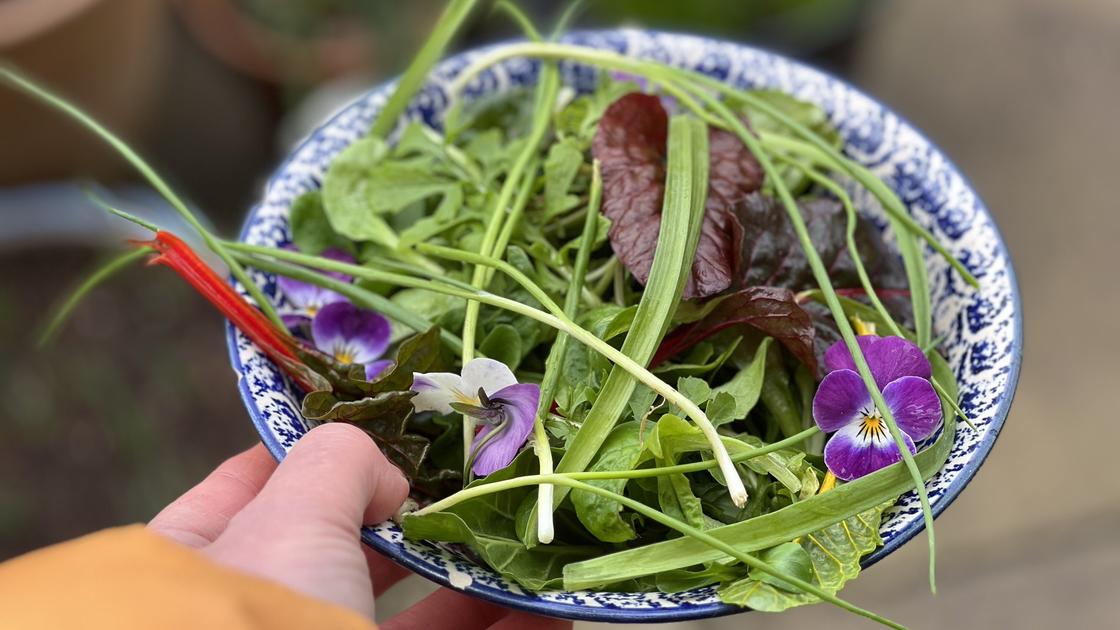
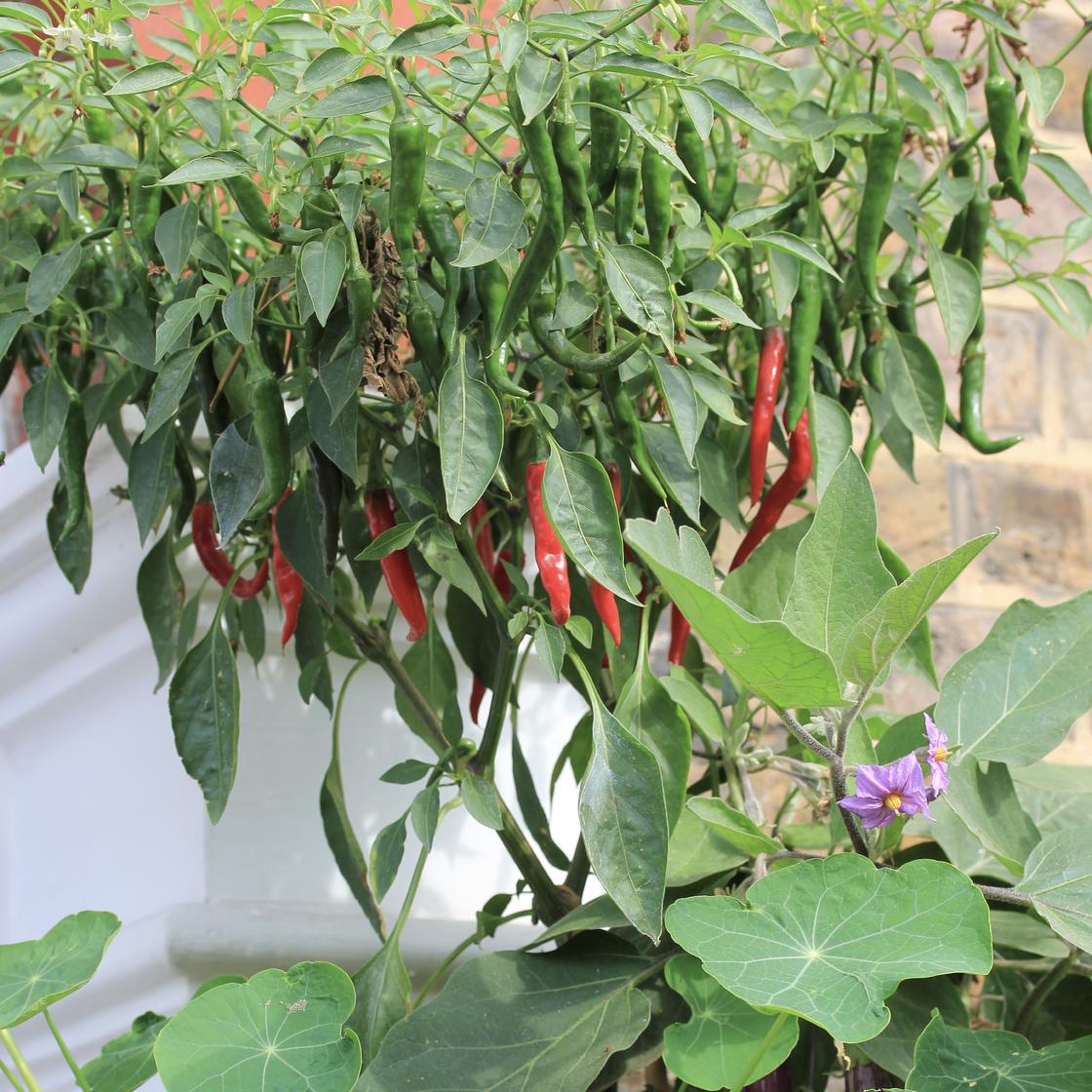
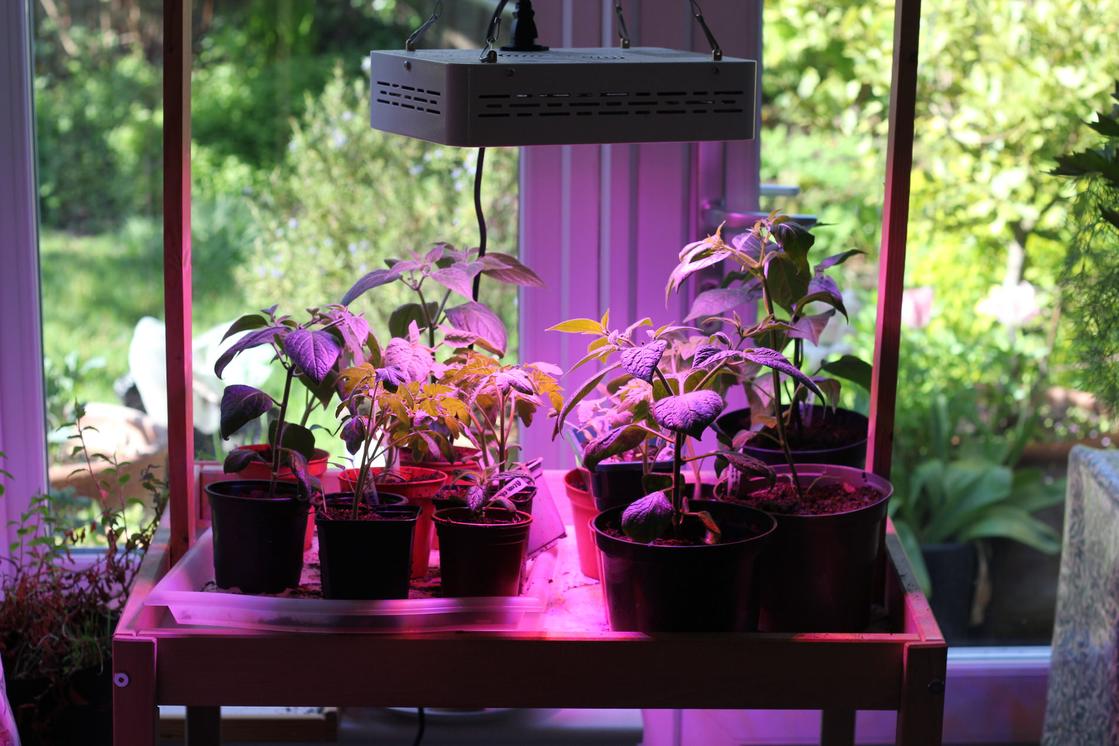
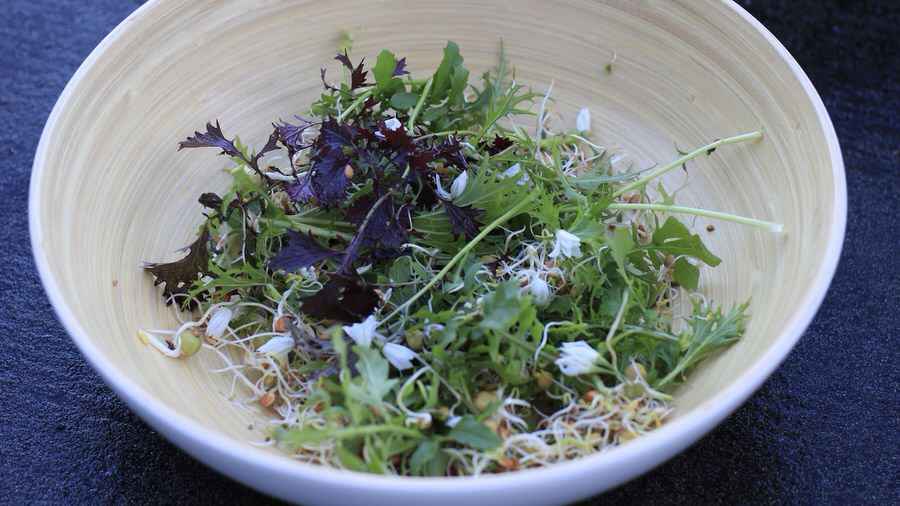
30 comments
Mayalyn, Perhaps, look at the trowel infomration on the Implementations site. They are said to have other uses too, inclusing a change in soil composition.
Some advice on choosing grow lights would be very welcome! Thank you.
Finally, someone agreeing not to wash pots. It has always struck me that despite no-dig and soil science advances there is still a counterintuitive focus on hygiene and sterilising soil. Not done this for years and most things survive. Loving all your advice and experiences. Re: Your winter salad, when and indoor/out did you plant the spring onion, 3 corner leek etc. is there a seperate post on this? Thanks
Hi Cal, yes it’s funny how obsessed we have become with hygiene, when in many instances killing microbial life lowers the quality of the soil and also simply clears the way for more harmful pathogens to move in. Great to hear you’ve not cleaned your pots for years and all has been OK. The 3 cornered leek are perennial and can be grown from bulbs or you can buy a plant. Very invasive so only for container gardens that are somewhat isolated from open ground. Most of the other salads are planted in September - often as things like French and runner beans finish. There is post with a bit more about winter growing here.
Leave a comment